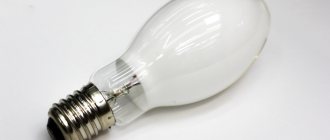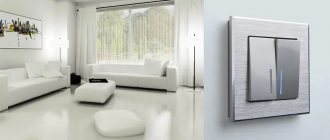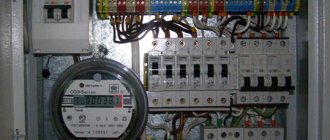06/30/2016 master
Today you can create high-quality lighting in any room using a wide variety of lighting devices. Their assortment is so large that many are slightly confused by such diversity. Recently, in the world, an increasing emphasis in matters of indoor lighting has been placed on modern wireless models of lamps.
Trends towards simplification and increased comfort have been observed for a long time. But not everyone knows how to equip their home with modern technologies for greater comfort for a relatively small fee. Devices such as wireless lighting, especially those equipped with motion sensors, will help you get closer to the futurological dream of a smart home system. Today’s article will tell you how to organize lighting in your home using such lamps.
Wireless is better
When creating lighting on the street or at home, you need to think through a lot, since a person’s health and comfort depend on how well the light was organized. A number of parameters need to be taken into account:
- placement of lighting fixtures;
- their degree of protection from moisture, as well as wiring protection;
- level of outgoing luminous flux. Its standards for each residential and non-residential premises are prescribed in SNiP;
- protection from mechanical damage.
Room lighting
Sensor switch
By using products such as wireless lighting, you avoid many problems. The peculiarity of such lamps is that they do not have the usual wires and operate on batteries. As a result, there is no need for wiring if you decide to install an additional light source. Such a lamp will work independently of the electrical network, i.e. offline. This type of lighting is controlled in two ways:
- using a remote control;
- using the touch switch.
Such control options are very convenient and allow you to make the lighting system as close as possible to “smart light”. The most convenient is a wireless lighting device with a motion sensor, since in such a situation the light will turn on or off automatically as soon as a person appears in the area controlled by the device.
Manufacturers
In retail and online stores, almost every wireless light switch is made in China. The most affordable schemes cost $2–3, but the quality leaves much to be desired. For around $8, you can purchase a remote control with an actuator for four channels (they can be connected to the same number of devices); for $15–30, there are studio devices for 8 devices.
Several domestic and Belarusian brands also play in the affordable segment, with the bulk of components coming from China. The advantages of the circuits—their price is $20–40—are a guarantee, calculation for voltage drops in the network and high strength of components; the disadvantages are the origin of the “internals” from the same People’s Republic of China.
Finally, in large retail chains you can find wireless light switches produced in Europe and the USA. These devices are expensive (the cost can reach $100–200), but the quality is beyond doubt, and many of the devices are integrated into the smart home system thanks to the support of the infrared protocol and Wi-Fi signal.
What you need to know about wireless devices:
- price directly affects quality;
- there are switches on the market from China, the CIS, Europe and the USA;
- the cost ranges from $2 to $200;
- in Russia and Belarus the production of such products has been mastered;
- The presence of a dimmer saves energy and protects the lamps.
Advantages and disadvantages
Installed device
Among all the variety of lamps at the moment, wireless models are very popular. This is due to the following advantages that can be obtained from their use:
- autonomous operation - on batteries, which can be replaced with more profitable batteries;
Note! The average operating life of a wireless lighting device depends on the capacity of the battery (battery) and is approximately one year.
- simple installation, which avoids such labor-intensive processes as wiring, installing additional sockets, etc. In this case, the installation is carried out cleanly, without dirt and dust, in just a couple of minutes. All you need here is double-sided tape and a couple of screws;
- affordable price;
- the possibility of purchasing lamps that are additionally equipped with a motion sensor;
- Possibility of installation anywhere (outdoors, at home, in closets, swimming pools, etc.).
Wireless lamps are also good because they have small dimensions and weight, which allows them to be mounted on almost any surface. At the same time, they can illuminate a sufficient area with soft and diffused light.
Note! The best option would be a wireless LED lamp with a motion sensor, which consumes minimal energy and is absolutely harmless to human health.
That is why such lighting products are becoming more and more popular every year. But, despite such positive characteristics, there are still some disadvantages that you should be aware of when purchasing wireless lamps. The disadvantages here include:
- Battery operated. On the one hand, the operation of battery-powered lamps is an advantage, but on the other hand, it is a disadvantage. This is due to the fact that they need to be changed periodically, and to do this you must remove the lamp to get to the battery compartment;
- the use in the manufacture of such lamps of materials that are not always natural. This must be taken into account when placing devices near heated devices.
As you can see, there are only two disadvantages here and they are lost in a number of advantages that can be obtained when installed in the house or on the street.
Which wireless switch is better
There are a lot of manufacturers of such equipment, but it is better to buy from proven ones. These include brands from our rating. We have described in detail the most successful brand models. The nominees do an excellent job with their main task of “controlling the light.” Additional functionality satisfies various needs for comfort. If we summarize the results of the work, we can highlight them as follows:
- Aqara D1 Wireless Remote Switch – compatible with the popular Xiaomi ecosystem, simple control, installation, affordable price;
- GRITT Practic SX 1cl. A1801MW is universal, does not require separate gateways, and is compatible with the remote control.
- Sibling Powerlight-M2 Wi-Fi – excellent value for money, huge range;
- SonoffT2EU2C is a touch-sensitive, inexpensive model that controls devices without the Internet.
If you want to save on battery replacement costs, choose kinetic switches such as the ArmaControl AS-6M. We hope our rating will help you find the right option for you.
Where are they used?
Due to their advantages, wireless lighting devices are widely used for various purposes:
- home lighting;
- illumination of the interior space of cabinets and wall-mounted kitchen units;
- use as night lights or night lighting for home premises;
- pool lighting. There are models that are able to float on the surface of the water, creating a very beautiful and romantic backlight;
Floating pool lighting
- lighting of shopping centers, counters and shop windows;
- illumination of industrial facilities for various purposes;
- lighting of streets, landscapes and building facades;
- lighting of dark places that are quite problematic to illuminate: attics, basements, garages, etc.
As you can see, the scope of application of wireless lighting devices is quite extensive. When choosing battery-powered lamps, you should take into account the place of work and the purpose of the device. This will allow you to buy a wireless lamp that will serve well throughout the entire period of its operation.
Types of lamps
Lighting control via Bluetooth
Wireless LED lights are divided into two large groups:
- Remote control using a smartphone and a special application.
- Responsiveness to movements in the room, thanks to the design being equipped with special sensors. If necessary, they turn on and off independently.
Also, the wireless LED lamp is divided into types according to its functionality:
- Lighting control using a voice sensor. A modern device is equipped with a speech recognition function - the lighting turns on and off after the code word is spoken.
- Built-in light sensor.
- Lighting is provided even in the absence of electricity. The light bulbs are additionally equipped with rechargeable batteries.
- Brightness adjustment.
- Change color temperature.
Lamps come in different shapes: pear, candle, balls, etc. The base of such equipment can also be different.
Variety of choices
Ceiling model
At this point in time, wireless lighting devices are divided into several types:
- ceiling Designed for ceiling installation. Due to their light weight and size, such devices can be easily installed on suspended stretch and plasterboard ceilings;
- wall-mounted This type of lamp is used most often, since a vertical surface is much easier to find than a horizontal one;
Wall model
- desktop These are portable models that can easily change their location. They are often used to create decorative lighting or as a night light in a children's room.
Tabletop model
In addition, wireless lamps, depending on the installation location and purpose, are divided into two large groups:
- internal. Installed in the house. They have a low moisture resistance class and are not able to function outdoors for a long time;
- external. Such devices are designed to create street lighting. They, on the contrary, have a high level of moisture resistance and are able to function without problems in various climatic conditions.
When choosing wireless lamps, you should definitely pay attention to the degree of protection from moisture, since the duration of operation of the device directly depends on this. In addition, battery-powered lighting products come with or without a motion sensor.
Models with motion sensors allow you to automate the operation of lamps, without a remote control or touch switch.
Here, the light turns on only when the sensor sensor detects movement in the controlled area. To minimize the risk of false alarms, fine tuning of the built-in motion sensor is necessary.
Specifications
The Stick n click “Smart Light” luminaire set
is an advanced technology that includes:
- Lighting.
- Special electronic systems that allow you to control lighting.
Control controllers may include sensors, microcontrollers, receivers, as well as other types of elements designed to control light.
The main difference between controllable lamps and conventional lamps is that they provide the ability to remotely control the lighting process. This will require the additional use of a computer or smartphone.
Device of wireless light bulbs:
- Standard base type E27.
- Ribbed housing made of aluminum (due to the material used, additional rigidity and better heat dissipation are provided).
- Matte cap made of plexiglass.
- Also, the internal cavity of the lamp is equipped with a transformer, a Bluetooth module with an antenna, a controller board, and LEDs.
Depending on the purpose, the lighting device can be additionally equipped with a video camera and microphone.
Model Light Angel
Model Light Angel
Among wireless models, the Light Angel motion sensor lamp is very popular today. This is an LED lamp that can well illuminate an area of five meters. The light turns on for 55 seconds. This time is quite enough to overcome the dark space. If you need to spend more time in the room, the device will leave the lighting on.
The advantages of Light Angel include:
- compactness;
- mobility;
- maneuverability. The lamp can rotate 360 degrees, and the maximum tilt is 90 degrees.
Note! The advantages listed above allow you to effectively place the lamp in any room of the house or anywhere else.
Light Angel has the following technical parameters:
- motion sensor;
- seven LEDs;
- LED operating period is 10,000 hours;
- material of manufacture: plastic;
- weight - 160 g;
- Installation method: three dowels and double-sided tape.
You can not install Light Angel at all, but use it as a portable flashlight. The light can also be turned on/off manually - there is a switch on the lamp. The lamp is powered by four AA batteries, which can be replaced with similar batteries. According to many evaluation criteria, such a wireless lighting device will be an excellent purchase, which will allow you to efficiently and effectively illuminate any corner of your home. In addition, Light Angel has waterproof fastenings, so it can be installed in entrances and small courtyards.
Rating of wireless switches
The operating principle is based on a transceiver, which is located inside the blocks. It sends a signal “over the air”, allowing you to control the lamp remotely. Using such a device, there is no need to trench walls or lay wiring.
The rating we have compiled will help you get acquainted with new electrical products. Before selecting nominees, we carefully studied customer reviews and expert recommendations. Detailed reviews helped to identify the main parameters affecting the quality and reliability of the device:
- Optimal power;
- Radius of action;
- Type of food;
- Ease of management;
- Operating temperature range;
- Availability of additional features.
These criteria made it possible to identify the 8 best remote light switches. From reviews of owners and opinions of electricians, we learned how well the chosen model corresponds to the declared characteristics.
Types of electrical wiring on the balcony
There are three types of electrical wiring that can be installed on the balcony: hidden, open and wireless (solar or lithium batteries).
Hidden electrical wiring
Before installing hidden wiring, grooves (grooves) are laid in the wall with a hammer drill and, accordingly, electrical wiring is laid in them in an insulating pipe. Then, all this is sealed with finishing putty. This kind of electric leash is quite labor-intensive.
Electrical wiring hidden in the baseboard cavity
Also along the ceiling, wires are laid in a metal or plastic sleeve and sheathed with finishing material, for example, clapboard. Major electrical wiring is installed before insulation and finishing; otherwise, after the walls are grooved, the balcony will have to be redone.
Open wiring
Open electrical wiring, junction box
If you have already repaired the balcony, but still need to install wires, safety regulations allow you to arrange open wiring . Moreover, the installation of open electrical wiring is not as labor-intensive as hidden wiring. In addition, today many owners use it.
Connecting additional equipment
If, in addition to lighting, you plan to install any household appliances on the balcony, then the electrical wiring must be routed to the electrical panel.
1. Run grooves from the shield to the junction box on the balcony. Also extend the grooves under the mounting box, sockets and switches. Punch a hole in the wall for the electrical wire to come out.
2. Lay the cable in the groove and secure it with alabaster every 20-25 cm.
3. Connect all the elements into one circuit and test the finished line with a multi-meter. Next, connect the light to the circuit breaker on the electrical panel and turn on the electricity on the balcony.
Safety precautions
Both closed and open types of balconies are especially fire hazardous . Therefore, it is necessary to take precautions: insulate electrical wiring as much as possible and do not use flammable materials when finishing balconies (plastic is especially dangerous).
In cases of short circuits, the possibility of fires occurring during hidden wiring is minimal. Use copper wires. They are more resistant to overloads and last longer than aluminum ones. Aluminum wires have only one advantage - low price.
How to install lighting on a balcony
1. Electrical installation begins with marking cable lines. To begin with, the places where the lamps, junction box and switch will be installed are determined.
2. Using a hammer drill, a hole is punched through which the cable from the room will enter the balcony and grooves for laying wires.
Working with a hammer drill, chipping
3. Be sure to “cut off” the electricity in the apartment.
4. Carefully lay the electrical wiring in the grooves and lead it out to the balcony in an electrical protective corrugation through the hole made in the wall.
5. Install the junction box in a safe, easily accessible location. Bring the corrugated wires to it and bring them inside.
6. Use special fasteners to secure the corrugation to the wall
7. Assemble the luminaire and install a switch between the luminaire and the junction box.
8. Upon completion of installation work, close the junction box and putty the cable grooves.
9. If necessary, connect the electrical wiring to the outlet in parallel or using an electrical plug.











